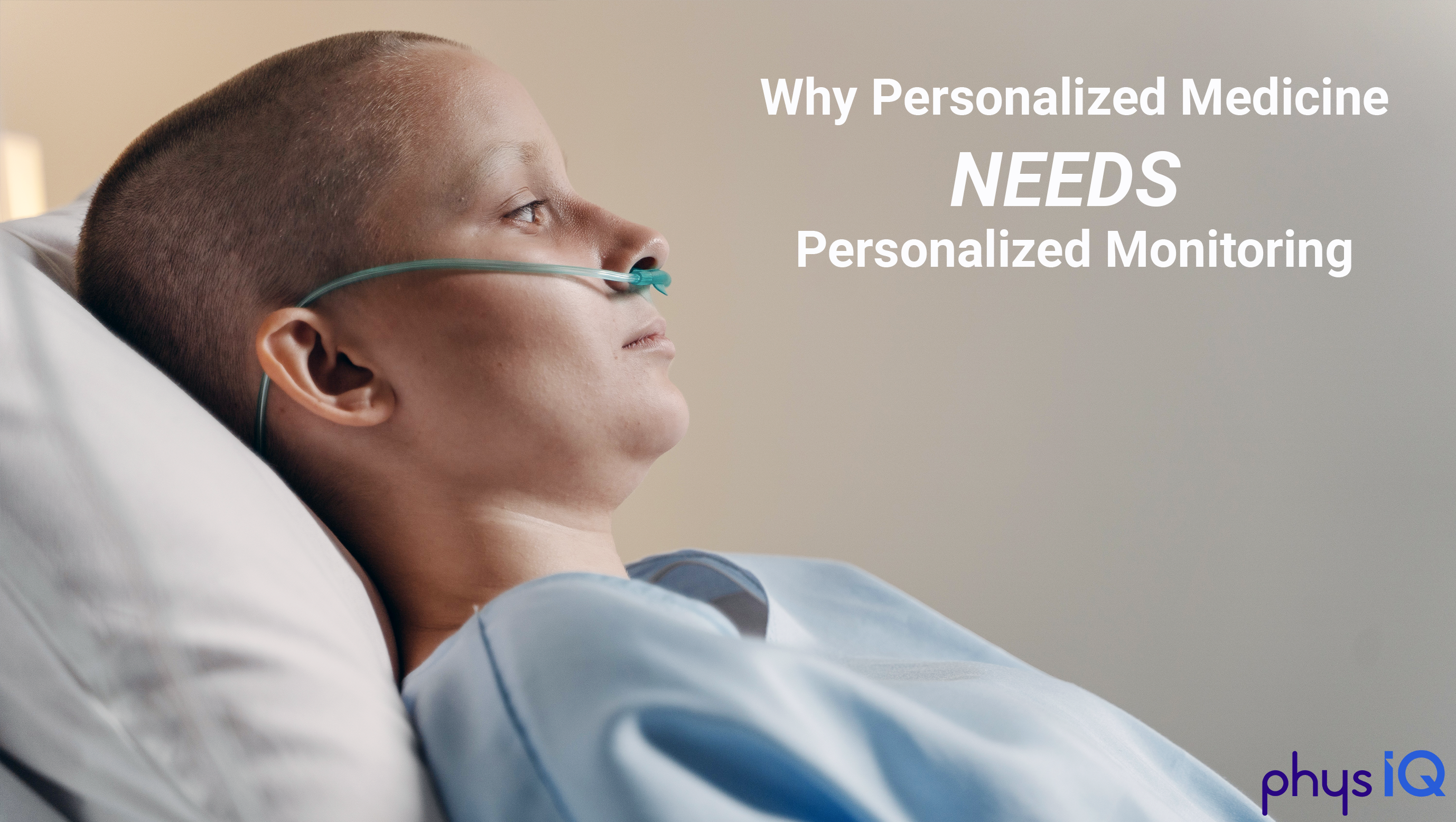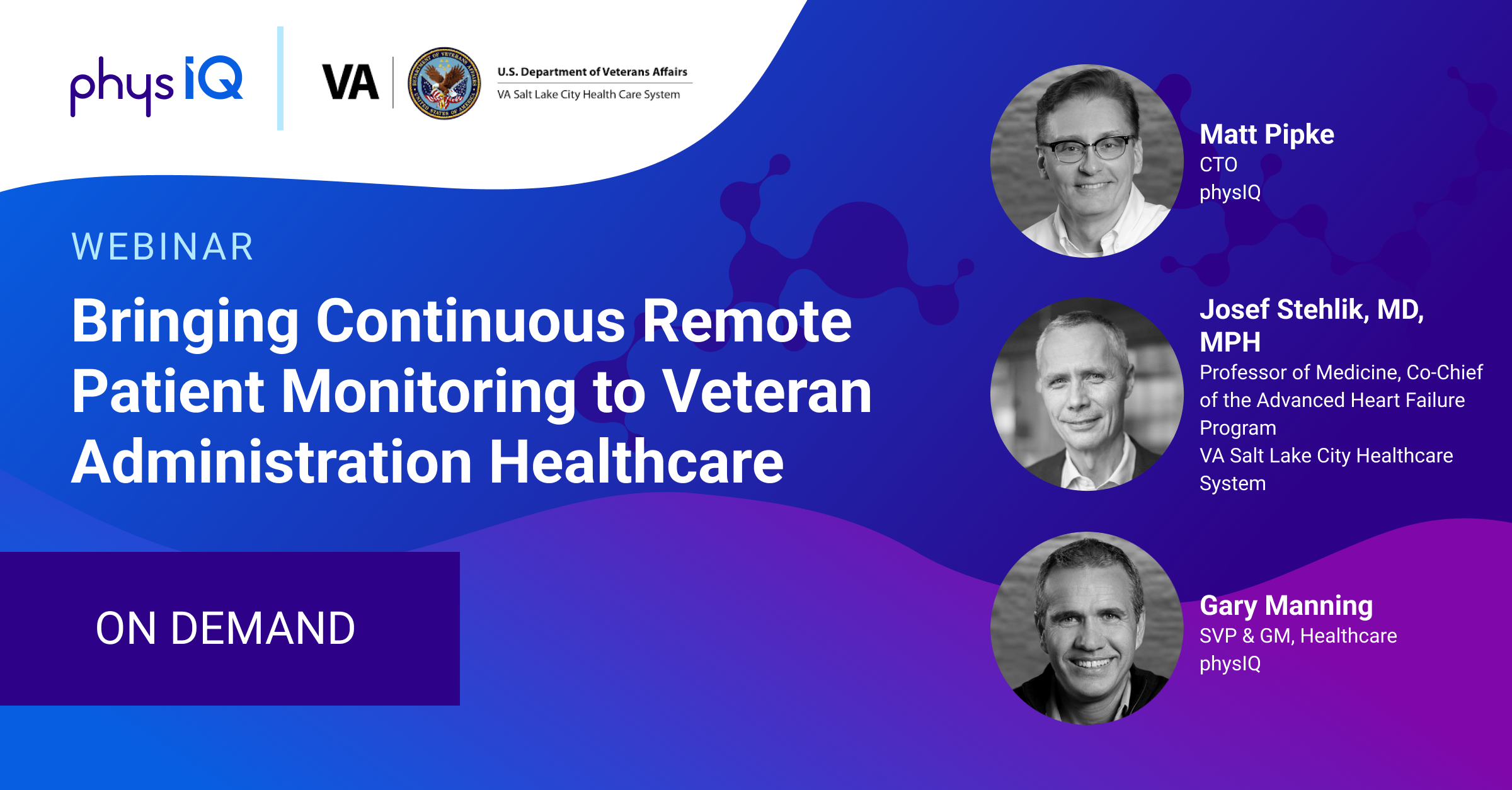Tracking mRNA from Efficacy to Effectiveness
Recent news around the promising mRNA vaccines targeting cancers results indeed caused great excitement in many circles. The number of mRNA clinical...
5 min read
![]() Matt Pipke
:
August 8, 2017
Matt Pipke
:
August 8, 2017

The medical establishment today is confined in its approach towards physiological monitoring based on time-honored biomarkers, procedures and therapies – that is, point solutions for specific diseases. To many of us, as engineers and scientists not originally trained in medicine, this disease-centric approach seems highly partitioned, even balkanized. Even the very structure of care provider organizations is departmentalized by specialty, creating gaps for miscommunication and missed opportunities to integrate information about patient health.
As an example of this, consider a typical elderly patient with a mix of comorbidities, such as heart failure (HF), COPD, atrial fibrillation (AFib) and diabetes. Though most of our own clinical studies to date have recruited from the HF population, we see comorbidity mixes like this all the time – it’s the rule, not the exception. Any one of these conditions can precipitate an episode of acute care, and moreover aggravate the other frailties.
On the other hand, the broad spectrum approach looks for any kind of physiological abnormality and then provides exception-based notification of where the expert human clinician should focus her attention and valuable time: Those patients whose physiological response to activities of daily living is evidencing abnormal behavior. This is an ideal intersection of currently deployable technology and the human expertise that can leverage it today.
Recent focus in Medicare reimbursement strategies has aimed at penalizing care providers for high readmission rates among certain categories of chronically ill patients who have been recently discharged – without regard for whether the readmission is caused by the same disease. It is likewise for Bundled Payments, which pays a fixed sum for an episode of care (like a HF hospitalization). This essentially makes the care provider responsible for continuity of care across the spectrum of the needs of the patient, at least for a period of time after an acute care episode.
Yet, what we see proposed for surveillance tools remains focused on disease-specific point solutions. At medical conferences, we see studies and presentations largely focus on evaluation of biomarkers for individual diseases – which means a patient with comorbidities needs to be sent home with all of them. At hospitals, we have seen multiple departments each deploy their own resources to separately surveil their patients remotely for exacerbation of the disease of departmental concern – missing the opportunity to consolidate surveillance efforts and gain efficiency.
How did things get this way? A couple of observations:
First, reimbursement practices have obviously set the tone. For decades, care providers have been paid to perform specific interventions for specific diseases. And they have been asked to meticulously document each episode according to an extensive taxonomy of DRGs. Broad spectrum surveillance of patient status has very much not been an activity paid-for. And, as most non-specialists will likely agree, effort spent on integrative medicine outside of acute care has not generally been well rewarded.
Is it then really surprising that this has driven a balkanization of care and therefore of monitoring? No.
A second and entirely different observation is this: The entire history of medicine up to about, well… now, has been characterized not only by episodic care, but episodic data as well. Medical practitioners have really only had the opportunity to measure anything about a patient when the patient was seen for medical attention. Test results could be harvested only in the moment, when the patient was at hand. There was no prospect of monitoring the status of patients over time in the wild. Under such circumstances, attention has therefore never focused on continuous surveillance looking for “the signal in the noise”, but rather has focused on definitive “thumbs-up/thumbs-down” diagnostic tests. Even when there has been systematic testing – mammograms, PSA, etc. – the data has been really quite sparse (by the standards of other fields of study) and centered on disease-specific markers.
This is not to say point solutions in medicine are not valuable. They are remarkable in what they do, and highly valuable in specific insights they provide. Who doesn’t want a nice, simple signpost for what’s wrong with the patient?
However, I firmly believe that we are poised to enter a new “Big Data” phase in health care that offers real-time visibility into patient status outside the four walls of the care facility. With this comes opportunities for new clinical workflow efficiencies, an improved experience for the clinician and better outcomes for patients. We are able to explore not only what is wrong with a patient, but when. Early detection (and the possibility of early, low-cost intervention) becomes a relevant possibility across all comorbidities. Since any comorbidity can exacerbate the rest, it makes sense to start with broad spectrum surveillance of general physiological derangement.
How “big” is the data? At physIQ we are already working with continuous multivariate vitals 24 hours a day – for months on end. This is actually easier to harvest than it is to require patients to proactively measure themselves with an apparatus a couple times a day, because we use “passive” wearables (in the sense that, once worn, they simply constantly measure without the patient doing anything). It’s a lot of data about each person.
Are there really clinical workflow efficiencies afforded by all this data from patients in the wild? After all, who has time to look at all this data?!
Absolutely this enables efficiencies – in myriad ways that are probably best elaborated in another write-up. At a high level, however, it’s widely recognized that keeping brittle patients stable at home is preferable and more cost effective (in the post pay-for-performance world) than frequent acute care episodes. And the holy grail of patient care is closing the feedback loop to the patients themselves, so they understand what behaviors have deleterious effects on their conditions – in real time! – and they engage on their own health maintenance. Imagine the power of a “teaching moment” that indicates physiological abnormality to the patient shortly after dietary or medication non-compliance at home; in contrast to trying to educate the patient at discharge from the hospital about all the Dos and Don’ts he should abide by in coming months.
But this question remains both pertinent and critical: Who has time to look at all the data? This is where software analytics comes in. Clinicians certainly do NOT have time to examine the raw data and could be utterly overwhelmed with new streams of data from the patient’s home. Analytical algorithms must be leveraged to filter out the noise, enhance the signal and identify what properly deserves the attention of the clinician. That’s the platform we have aimed to build at physIQ. It focuses on the single practical problem of picking up on early signs of physiological derangement against the backdrop of normal vital sign variation of daily life. The signal in the noise, so to speak. The most immediate use is remotely monitoring patients with chronic illness – those who are at risk of problems that can easily evolve into acute care episodes at any time, but who are otherwise well enough to go home and put some distance between themselves and dangerous places like hospitals.
At the same time, the availability of continuous physiological telemetry changes the game. The anomaly worthy of clinician attention will not always be as unequivocal as a biomarker diagnostic test – especially if what you’re looking for is early warning and lead time to intervene early. To know as early as possible, you may not have the luxury of knowing exactly what the diagnosis will be. The clinician still has the opportunity to use her medical training and experience to synthesize most likely scenarios based on the evidence. That’s why we have focused on broad spectrum anomaly detection in the new clinical workflow of our platform. We don’t try to diagnose (though that will come in time with more data). We don’t try to replace the skills of the expert clinician. We don’t dictate the medical intervention. We want to provide the clinician with indicia of change in physiological behavior, tease out of the signals the kind of evidence that tells the clinician a story about what appears to be going on with the patient remotely, and allow the clinician to make an informed investigation on the right patients at the right time.
Recent news around the promising mRNA vaccines targeting cancers results indeed caused great excitement in many circles. The number of mRNA clinical...

The recent wave of public interest in several groundbreaking studies of mRNA vaccines in the treatment of cancer are perfect examples of how the rise...

Prevention, early detection, and vigilant patient monitoring are critical elements in successfully and cooperatively managing patients with heart...